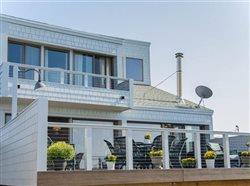Hurricane season, wind speed and your home’s siding: What you need to know
(BPT) - Living near or along a coast has many advantages: warm weather, beach access, soothing waves and walks in the sand. However, the areas that are the most beautiful are often the most susceptible to hurricanes and other severe weather. If you live near the coast – or are looking to build or re-side in a hurricane-prone area – it’s important to understand wind load classifications and how different types of building materials stand up to high winds.
Residents in Florida, the Gulf Coast and some areas of the East Coast are all too familiar with the horrific aftermath of damaged homes and property from major storms like Katrina, Andrew and Sandy—the three costliest in U.S. history. The estimated losses for Katrina alone are in excess of $125 billion.
Hurricane season runs from June 1 to Nov. 30. For six months out of the year, the coast is at risk for intense rain, storm cells and oceanic water that causes high winds and flooding. As hurricanes move through a community, they can take debris from homes and buildings which can contribute to widespread damage.
Siding is one of the most important building materials to consider when purchasing or building near the coast. Weak and fragile siding can blow off a home, and wind-driven rain can get inside the wall cavity, causing water damage and mold.
Fiber cement siding—which is composed of sand, cement and cellulose fibers—can bear higher wind loads compared to alternative materials such as vinyl. Florida has some of the strictest wind load requirements in the country. According to the Florida Building Code, siding in the southern panhandle must be able to withstand 150 to 180 mph winds. Not all fiber cement products can meet these requirements, but James Hardie HardiePlank lap siding is approved by the Code for installation in areas with wind speeds up to 200 mph.
A home’s windows and doors are also susceptible to damage from rain, wind and windborne debris unless manufactured to address these vulnerabilities. Leakage around windows and doors are more subtle than siding damage; but the effects are equally detrimental to a home. Even when the structure of a door or window remains intact, water intrusion can enter the interior of a wall cavity and may weaken the window or door framing—or even the wall framing itself. Water intrusion can even reach the interior of a home, facilitating mold growth and damaging interior finishes, according to the Federal Emergency Management Agency’s Local Official’s Guide to Coastal Construction.
Impact-resistant systems are recommended by FEMA for windows and doors that contain glass. These protection systems usually involve layers of heat-hardened and chemically-treated glass that are in place at all times; homeowners don’t need to activate or be involved with the system after installation. Shutters, screens and panel systems are seen as a “next-most-desirable option” for wind protection, according to FEMA’s coastal construction guide.
The Federal Insurance and Mitigation Administration’s Natural Hazard Mitigation Saves report found that each dollar spent on wind damage mitigation results in $4 worth of savings on recovery. The risk of hurricanes doesn’t have to tarnish dreams of coastal living. Find more information about siding and building recommendations for high wind, flood-prone areas at JamesHardie.com and FEMA.gov.







